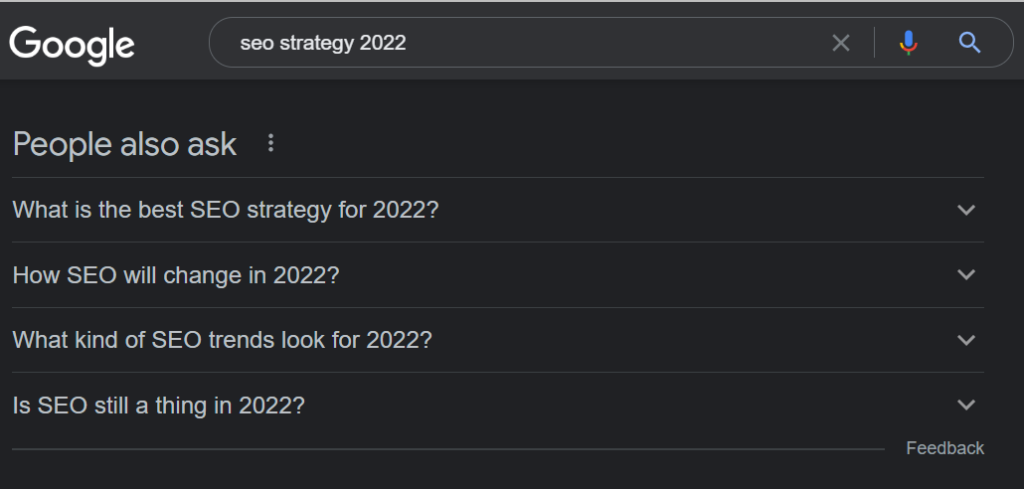5 Unexpected SEO Factors You Should Be Tapping Into

What is an SEO ranking factor?
SEO ranking factors affect your website’s search engine ranking. For example, Google’s algorithm will decide whether your outstanding article on cat eye colors will make it to page one. How to maximize your content’s chances depends on the SEO ranking of the content.
Google and Bing employ SEO to show search results. These search engines demand the right results. “Right” signifies a page that matches the user’s search: it may not be the best material, but it’s what the user wants.
A landing page must match the user’s search intent. You shouldn’t show a product page to someone seeking information — not yet, because they’re still lost. On the other hand, if a buyer lands on one of your longer blog posts, you risk losing them. You should send them to your store’s product page.
Product pages must include commercial keywords. Optimize a category page for [buy dog food] if you sell dog food. Do you write about dog food? This content may be tailored for [how to feed my dog] and aimed toward informational consumers.
SEO ranking is content placement on Search Engine Results Pages (SERPs). Ranking number one means that your website is the top result for a given phrase.
Click-through rates rise as you approach number one in search results. The top 10 first-page results are also significant, but 95% of readers don’t finish the first page.
Top 5 Unexpected SEO Factors You Should Be Tapping Into
Google was founded in 1998, although it wasn’t until 2003 that it began developing intelligent algorithms to provide the best search engine user experience possible. Google invented FLORIDA due to the keyword-stuffing techniques many web admins used to score highly.
FLORIDA fought against black hat SEO techniques and paved the way for Google’s incredibly complex array of algorithms, influencing how we search today.
As a result, modern search optimizations need modern SEO factors. Here are the top 5 unexpected SEO factors that can give your content an advantage.
- ‘People Also Ask’ section.
You’ve probably Googled something and seen drop-down menus with responses. Similar to:

People Also Ask is a relatively recent service offered by Google to give users on-demand, real-time information. Users can see critical details relevant to their questions by using drop-down boxes.
To land a featured snippet, answer the question in your post. You must optimize your content for high-volume keywords with relevant inquiries.
This strategy is used to find the most helpful questions to develop content, as People Also Ask queries often have low search volume.
How can you get these questions? Here are some of the steps that you can follow:
- Discover pages that rank for numerous keywords.
- Use Ahrefs or SEMrush to analyze and scrape their keyword rankings
- Gather all of their People Also Ask for information
- Pick the most frequent or popular queries
- Ensure you do not already rank for the keyword
- Determine if you can genuinely rank and if the keyword difficulty is not too high
- Optimize your page for this long-tail/question keyword just like you will do with any other term
2. Google E.A.T. – Long Form Content
Google E.A.T. stands for EXPERTISE, AUTHORITY, and TRUST.
This abbreviation represents the official Google guideline for observing and crawling web pages to evaluate content quality. It’s what its bots use to distinguish between high-quality and low-quality content.
This policy has been in effect for more than seven years, but it wasn’t until 2015 that Google officially published them, due to an internet leak of company standards.
In 2022, E.A.T. will continue to play a significant role in SEO strategy. Actually, it’s perhaps more important than ever, with brands and marketers favoring high-quality content over other SEO strategy elements.
The benefits of SEO and marketing are limitless, ranging from more natural backlinks to increased page dwell time. In addition, developing longer-form content never ceases to provide additional brand benefits when time and effort are invested.
On top of that, it has been proven that longer content results in higher rankings. Remember this when developing SEO content to create user-centric, high-quality material that addresses problems.
3. Localization of SEO strategies
Google My Business merits its subsection here. Localization of SEO in 2022 will necessitate you prioritizing these adjustments on your website.
In a time of broad uncertainty and ongoing political events, it is vital to know whether businesses are open and how they work. And this is precisely where Google My Business comes in — supplying users with the necessary contact and business information for local providers/retailers.
These listings additionally include:
- Real-time business hours
- Visitor patterns and times of day
- Phone numbers, websites, and email
- Reviews & Ratings
- Detailed directions
You can also post updates regarding your operations or special deals to keep your clients up-to-date on any significant business developments.
4. Schema markup
It hasn’t commonly been understood yet, but the schema markup is a significant SEO trend in 2022. Adding more structured data and rich snippets (and formatting) to your sites and content boosts the likelihood of obtaining valuable real estate on SERPs, such as People Also Ask.
Since Google’s engines tend to prioritize user-centric experiences, tailoring your content to appeal to these portions of SERPs can be just as advantageous as placing in the top 10 search results on the first page. This is why these appearances are referred to as “Position 0.”
Fortunately, there is often a simple method you can apply to generate structured data for any internet page:
- Utilize Google’s Structured Data Markup Assistant to construct your schema
- Choose the ‘Type of Data’ best relevant for your needs
- Enter the URL to be marked-up
- Select which elements to highlight
- Keep adding more markup elements
- Produce the HTML
- Include the markup on the page.
5. Video SEO gets an upgrade.
Consider this SEO fact: there are 800 million videos online and 37 million active channels. With this in mind, it is not surprising that video SEO is gaining popularity.
Given the development of Google’s M.U.M. algorithm, which favors video clips in Search Engine Results Pages, optimizing your video content for SEO will be vital beyond 2022. Ensuring that your content appears on the first page is no longer sufficient. You must also do your best to promote your video material.
How? Use these steps:
- Pick a keyword.
- Optimize the title and description
- Tag correctly
- Write a fun script and create longer videos
- ‘Subscribes’ and ‘likes’ promotes engagement.
- Create Playlists. Keep viewers interested and Use a compelling thumbnail.
- Caption videos and use social media to promote your videos.
Don’t neglect the traditional SEO
Although all of these new and exciting SEO trends for 2022 are enticing and worth investing time and money in, it is crucial not to lose track of traditional SEO and its efforts. That means you need not entirely recreate the wheel. You should invest in these methods to increase your search visibility, website traffic, and sales via exposure on search engines such as Google.